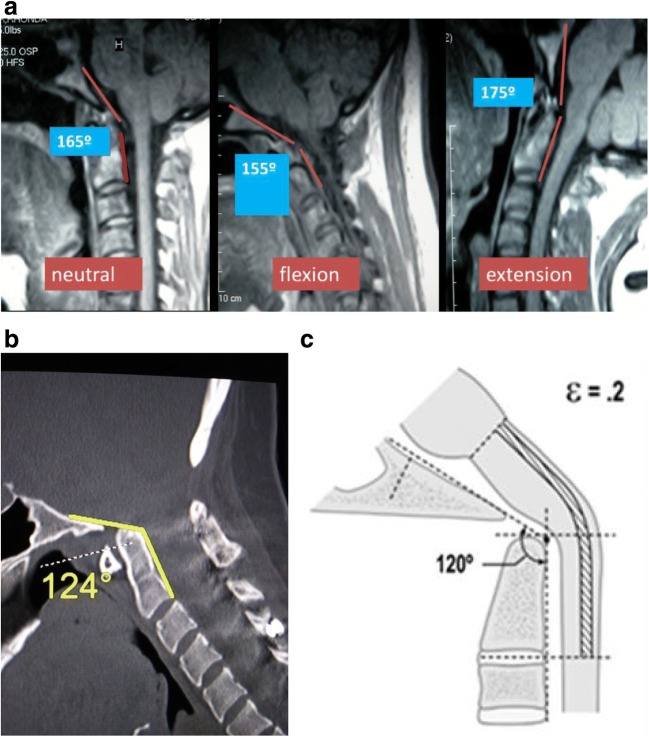Fig. 2.
a The normal CXA. The normal CXA is approximately 155°, decreasing 10° in flexion and increasing 10° in extension. b The pathological clival axial angle (CXA) is more kyphotic than the normal CXA. The CXA is subtended by the posterior axial line and a line drawn along the surface of the lower third of the clivus. An angle of 135° or less is considered potentially pathological. The kyphotic CXA of 124° shown here is clearly pathological and results in a mechanical deformity and lengthening of the brainstem and upper spinal cord, as shown diagrammatically in the next image (Fig. 2c). c Diagrammatical rendering of a kyphotic CXA. In hereditary connective tissue disorders, ligamentous laxity may thus result in a kyphotic CXA in flexion, with a concurrent increase in strain (Ɛ)

